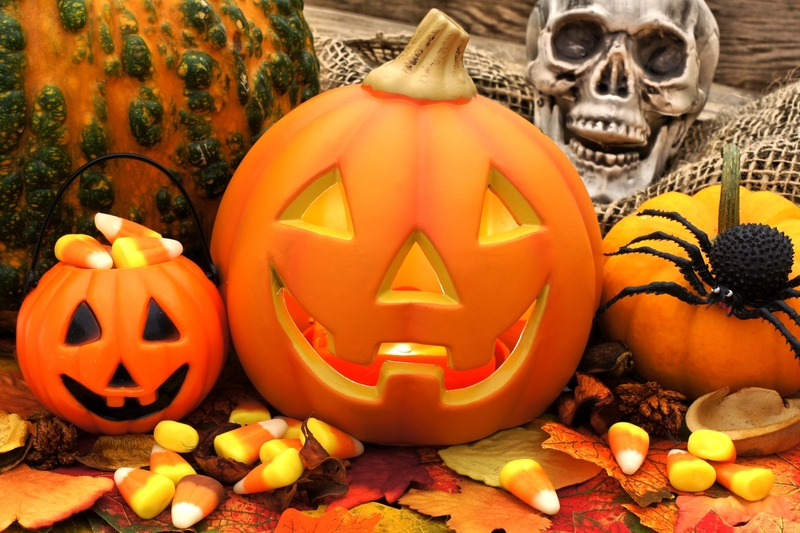Birthflowers: A Journey Through Blooming Traditions
Posted on 13/08/2025
Birthflowers: A Journey Through Blooming Traditions
The world of birthflowers is as mesmerizing as the blooms themselves. Across cultures and centuries, people have attributed special meanings to specific flowers, intertwining these fragrant petals with the very fabric of their birth months. In this article, we delve deep into the enchanting lore of birth month flowers, tracing their origins, meanings, and the role they play in modern-day celebrations. Whether you're searching for the significance of your own birthflower or looking for the perfect personalized gift, join us on a journey through blooming traditions.

What Are Birthflowers?
Birthflowers are specific flowers traditionally associated with each month of the year. Much like birthstones, each type of flower represents qualities, traits, or symbolism that relate to the individuals born in that month. The concept of birthflowers dates back to ancient civilizations, where botanicals played a central role in myths, medicines, and spiritual practices.
The Roots of the Birthflower Tradition
Tracing the origins of birthflowers leads us back to a blend of Roman, Greek, and eventually European customs. In Ancient Rome, flowers were often used in celebrations and were carefully selected for birthdays and anniversaries due to their symbolic significance. Medieval herbalists continued this tradition, using flowers and herbs both for their healing properties and their mystical associations. Over time, the tradition evolved, and by the Victorian era, the language of flowers--known as floriography--gained immense popularity. Each bloom became a coded message, and birthflowers took on special, individual meaning.
Why Are Birthflowers Important?
- Personal Connections: Birthflowers create a meaningful, personalized connection to your birth month.
- Symbolic Representation: Each flower encompasses unique characteristics and symbolism, offering insight into personality traits.
- Cultural Celebrations: Incorporating birthflowers into celebrations and gifts brings tradition into the modern era.
- Emotional Resonance: Giving someone their birth month bloom adds an emotional touch to any occasion.
Month-by-Month Birthflower Guide
Let us take a stroll through the year, pausing at each month to explore its representative birthflowers, their history, and their meanings. These associations may vary by region, but the following guide represents the most widespread traditions.
January: Carnation -- The Flower of Devotion
- Scientific Name: Dianthus caryophyllus
- Symbolism: Admiration, love, and distinction
- Color Matters: Red carnations express deep love, while pink signifies gratitude
Carnations, often seen in the coldest month, symbolize warmth and undying love. Giving this birthflower in January is believed to bring luck and affection.
February: Violet -- The Bloom of Loyalty
- Scientific Name: Viola
- Symbolism: Faithfulness, humility, and spiritual wisdom
February's birthflower is cherished for its vibrant color and delicate fragrance, symbolizing steadfast loyalty in relationships.
March: Daffodil -- The Blossom of New Beginnings
- Scientific Name: Narcissus
- Symbolism: Rebirth, renewal, and hope
As the first signs of spring, daffodils burst forth in March, carrying with them the promise of new possibilities.
April: Daisy -- The Classic of Innocence
- Scientific Name: Bellis perennis
- Symbolism: Innocence, purity, and cheerfulness
Daisies, with their cheerful countenance, encourage optimism and joy, making them the perfect flowers for April birthdays.
May: Lily of the Valley -- The Floral Herald of Happiness
- Scientific Name: Convallaria majalis
- Symbolism: Sweetness, humility, and happiness
With tiny, bell-shaped blossoms, this May birthflower is often used in bridal bouquets for its pure and gentle symbolism.
June: Rose -- The Empress of Birthflowers
- Scientific Name: Rosa
- Symbolism: Love, beauty, and honor
- Color Significance: Red for romance, yellow for friendship, white for purity
Few flowers are as universally adored as the rose, making it a fitting bloom for June, a month associated with the start of summer and blossoming romance.
July: Larkspur -- The Flower of Lightness
- Scientific Name: Delphinium
- Symbolism: Positivity, dignity, and open heart
Larkspur's tall, vibrant spikes encourage light-heartedness and good cheer for those celebrating in July.
August: Gladiolus -- The Spear of Strength
- Scientific Name: Gladiolus
- Symbolism: Strength of character, integrity, remembrance
With their dramatic, sword-like leaves, August's birthflower is a symbol of power and grace.
September: Aster -- The Star of Wisdom
- Scientific Name: Aster
- Symbolism: Wisdom, faith, valor
Named after the Greek word for "star," the aster is a shining emblem of eloquence and wisdom.
October: Marigold -- The Flame of Passion
- Scientific Name: Tagetes
- Symbolism: Creativity, passion, and warmth
Blooming in vivid golds and oranges, marigolds energize October with a spirit of enthusiasm and drive.
November: Chrysanthemum -- The Flower of Friendship
- Scientific Name: Chrysanthemum
- Symbolism: Friendship, joy, and longevity
Chrysanthemums, with their rich colors and elaborate petals, have long represented well wishes and happy friendships.
December: Holly -- The Evergreen Guardian
- Scientific Name: Ilex
- Symbolism: Hope, protection, and good fortune
As one of the few plants to retain color through the winter, holly stands for resilience and joy in December.
Meanings and Symbolism Behind Birthflowers
Birthflowers are not just decorative; they are rich with symbolic meanings. Each month's flower carries stories and legends thought to reflect the essence of those born beneath their bloom.
- Cultural Influences: In Japan, the hanakotoba (language of flowers) assigns different meanings, sometimes differing from Western traditions.
- Color Significance: The color of each birthflower often alters its symbolism--red roses may mean love, while white roses symbolize innocence.
- Mythological Roots: Many birthflowers appear in ancient myths: Narcissus from Greek lore or the lily of the valley linked to Christian stories.
The Language of Flowers in Modern Times
Today's fascination with birthflower meanings is evident in everything from jewelry design to greeting cards. Many people choose to incorporate their birth month flower into tattoos, stationery, or wedding bouquets as a subtle nod to tradition and personal identity.
In the era of personalized gifts, birthflower jewelry and keepsakes have surged in popularity, perfectly blending beauty with individuality. Artisans craft lockets, necklaces, and rings featuring intricate floral motifs, making for thoughtful, meaningful tokens.
Comparing Birthflowers to Birthstones
Both birthstones and birthflowers serve as unique markers of individuality, giving people a special connection to their birth month. While birthstones are mineral-based and often worn as jewelry, birthflowers are ephemeral and natural, frequently used in celebrations, floral arrangements, and even perfumes.
- Personalization: Birthflowers offer a fresh alternative to traditional birthstones, suitable for gifts and ceremony.
- Nature's Cycle: Flowers connect us to the changing seasons, bringing their symbolism alive each year.
- Eco-Friendly Choices: Gifting or planting birthflowers can be a sustainable, environmentally conscious gesture.
Birthflowers Around the World
The tradition of birth month flowers is not exclusive to Western societies. Many cultures have developed their own calendars of floral significance.
- China: The peony is a symbol of success and wealth and often features in birthday celebrations.
- United Kingdom: The Royal Horticultural Society offers its own official list of birth month flowers, which sometimes varies from American traditions.
- Native American: Some tribes associate particular plants with spiritual guardianship linked to birth months.
Alternative Birthflowers
Not all birthflower lists are the same. Some months have alternative blooms depending on regional customs, historical texts, or botanical availability. For example, sweet pea is sometimes listed for April, and hawthorn is another option for May. Exploring these alternative traditions can be a fascinating journey for anyone curious about the broader world of birthflowers.
Ideas for Celebrating with Birthflowers
- Personalized Bouquets: Create a unique floral arrangement for someone's birthday using their birth month flower.
- Floral Jewelry: Gift a pendant or charm featuring the recipient's birthflower.
- Birthflower Gardens: Plant a garden with each family member's birthflowers, creating a living, blooming family tree.
- Art and Decor: Incorporate birthflower motifs into paintings, embroideries, or home decor for a personalized touch.
- Tattoo Inspiration: Many people choose their birth month flower as meaningful body art.

The Enduring Legacy of Birthflowers
Whether you see them as beautiful tokens, bearers of luck, or spiritual symbols, birthflowers have an enduring legacy. Their ability to both personalize and elevate a birthday, anniversary, or celebration ensures they remain a cherished custom across generations.
Understanding the significance of birthflowers allows us to connect with history, culture, and the natural world. This simple tradition reminds us annually of the fleeting beauty of nature, the cyclic rhythm of the seasons, and the timelessness of human sentiment.
Conclusion: Embark on Your Own Birthflower Journey
In the enchanting realm of birthflowers, every blossom tells a story. These floral birth month symbols provide us with both a sense of identity and a timeless connection to the world around us. Whether you cherish them as a personal touch, share their beauty as a heartfelt gift, or simply admire their historical depth, birthflowers offer a delightful bridge between tradition and self-expression. As you celebrate your next milestone, consider honoring it with a bloom that's just as unique as you.
Let the language of flowers inspire your celebrations, deepen your connections, and add a fragrant note of tradition to life's most important moments. May your personal birthflower open the door to a lifelong appreciation of nature's artistry and storytelling power.
Latest Posts
Explore the best plants for hassle-free office care
Birthflowers: A Journey Through Blooming Traditions
Simple Tricks to Keep Your Bouquet Lasting Longer





